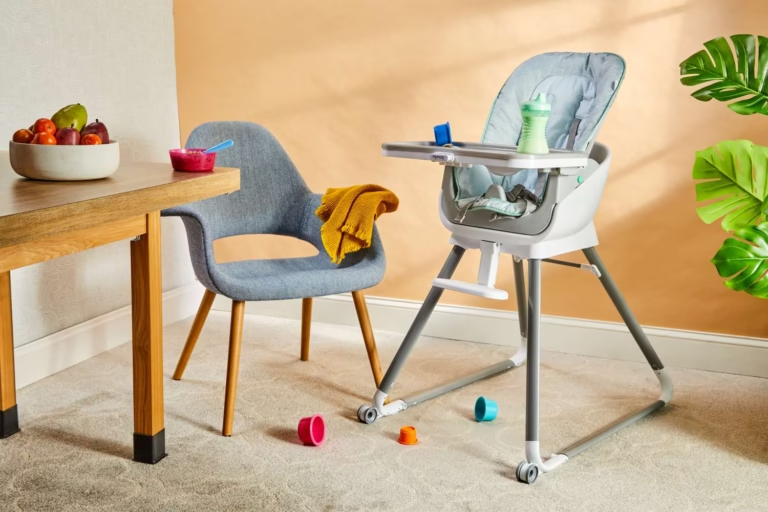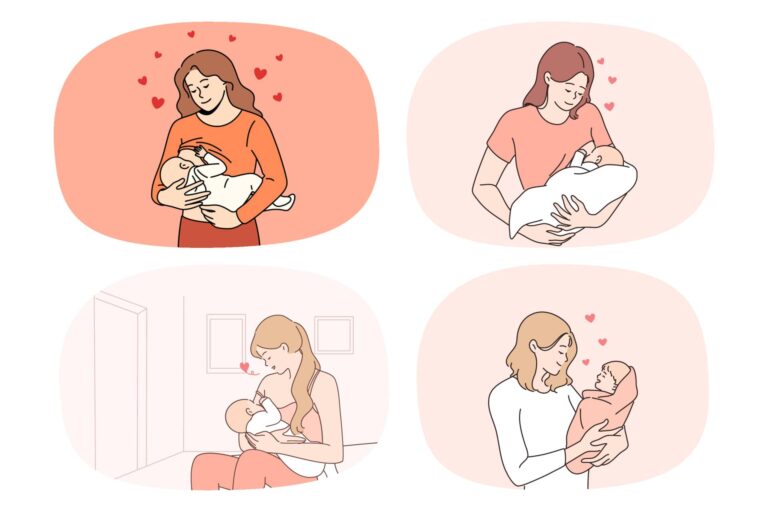When Do Babies Need a High Chair: Essential Milestone Guide
Babies typically need a high chair from around 6 months. They should be able to sit upright and have good head control.
Introducing your little one to a high chair marks a significant milestone that comes with the excitement of new developments and the challenges of feeding. As parents navigate their journey, the question of when to start using a high chair often arises.
A high chair not only gives babies a safe spot to explore new tastes and textures, but it also fosters family bonding during meal times. Caretakers should ensure the baby demonstrates readiness for upright seating to promote safety and comfort. Ergonomically designed for tiny bodies, high chairs provide the necessary support for infants learning to eat solids, making them essential gear in a baby’s growth journey. Selecting the right time to introduce a high chair goes hand-in-hand with watching for signs of developmental readiness, turning mealtime into an enjoyable experience for both the baby and the family.
Essential Milestone: Sitting Upright Independently
Babies develop neck and head control as they grow. This ability is crucial before they start using a high chair. Typically, babies achieve this milestone between 4 to 6 months old. It’s important they can sit upright without support to eat safely in a high chair.
| Age Range | Milestone |
|---|---|
| 0-2 months | Limited head control |
| 2-4 months | Improving head stability |
| 4-6 months | Sitting upright with control |
The Right Time To Introduce A High Chair
Introduce a high chair as your baby shows readiness. Look for visual cues like sitting upright with minimal support. Notice if they show interest in food and your eating habits.
Babies typically exhibit these signs around 6 months. Yet, every child develops at their own pace. Observe your child, not just the calendar, to decide when to start using a high chair.
Types Of High Chairs And Your Baby’s Needs
High chairs are needed when your baby sits upright. This skill is often ready at 4 to 6 months. Parents choose between traditional or modern designs. Traditional designs are sturdy with classic looks. Modern designs offer innovative features and portability.
Comfort and safety are key when picking a high chair. Look for a stable base, secure harness, and adjustable settings.
| Feature | Description |
|---|---|
| Stable Base | Prevents tipping over |
| Secure Harness | Keeps baby safe |
| Adjustable Tray | Room for growth |
Making The Transition To A High Chair
Babies can move to a high chair around six months old. First, ensure they sit up without help. Look for steady head control. A stable high chair is crucial.
Begin with short periods in the chair. Always use the safety harness. This keeps your baby secure. Get them used to the space. Let them play with a spoon or soft food.
Some babies might resist. Be patient and comforting. Distract them with colorful toys. If they fuss, try different chair positions. Always stay by your baby during meals. This ensures safety and bonding.
The High Chair’s Role In Baby’s Development
A high chair serves a key role in a baby’s growth. It offers more than a place to sit. Babies engage with their surroundings from this new vantage point. They observe and participate during mealtime, aiding social and feeding skills.
Using a high chair daily can ease babies into a routine. It provides a secure spot for exploring textures and tastes. It also helps parents in establishing a consistent eating schedule. Babies learn the importance of family mealtime, creating a foundation for healthy eating habits.
When To Move On: High Chair To Booster Seat
Switching to a booster seat is a significant milestone. Your child may be ready if they can sit well without support. Check if they’ve outgrown their current high chair. Do they try climbing out? This is a clear sign for the switch. Here are key features to consider in a booster seat:
- Safety straps to secure the booster to the chair and your child in the seat.
- A sturdy design that doesn’t tip over easily.
- Easy to clean surfaces for quick mess management.
- Comfortable seating for your child’s longer meals.
- A tray can be useful for children not yet ready to reach the table.
- Consider adjustability to grow with your child.
High Chair Safety Tips
Ensure your baby’s high chair is stable and strong. Place it on even ground. Check for a wide base to prevent tipping. Always use the provided safety straps. These should include a five-point harness that goes over the shoulders, around the waist, and between the legs.
For mealtime safety, never leave a child unattended in their high chair. Keep hot items and sharp utensils out of reach. Make sure the tray is secured properly. Do a regular check for any loose screws or damaged parts.
| Aspect | Check for | Action |
|---|---|---|
| Stability | Even ground, wide base | Adjust chair accordingly |
| Straps | Five-point harness | Always strap your child in |
| Tray | Firm attachment | Secure before use |
| Maintenance | No loose parts | Regular checks |
Frequently Asked Questions
Can A 4 Month Old Sit In A High Chair?
Yes, a 4-month-old can sit in a high chair if they have the neck and head strength to sit upright without support. Most infants are ready between 4-6 months.
Is It Necessary To Have A High Chair?
A high chair is not necessary but provides a safe, secure seat for your child during mealtimes once they can sit upright unassisted.
Do 1 Year Olds Use High Chairs?
Yes, 1 year olds typically use high chairs for safe and supported seating during meals.
Conclusion
Deciding the right time to introduce a high chair is vital for your baby’s safety and development. It’s generally around the 4-6 month mark when babies show readiness. Remember, each child develops at their own pace. Look for key indicators like steady head control and sitting without support.
A high chair can then become an integral part of mealtimes, fostering independence and joining family gatherings. Make this transition smoothly, keeping your child’s comfort and safety paramount.






